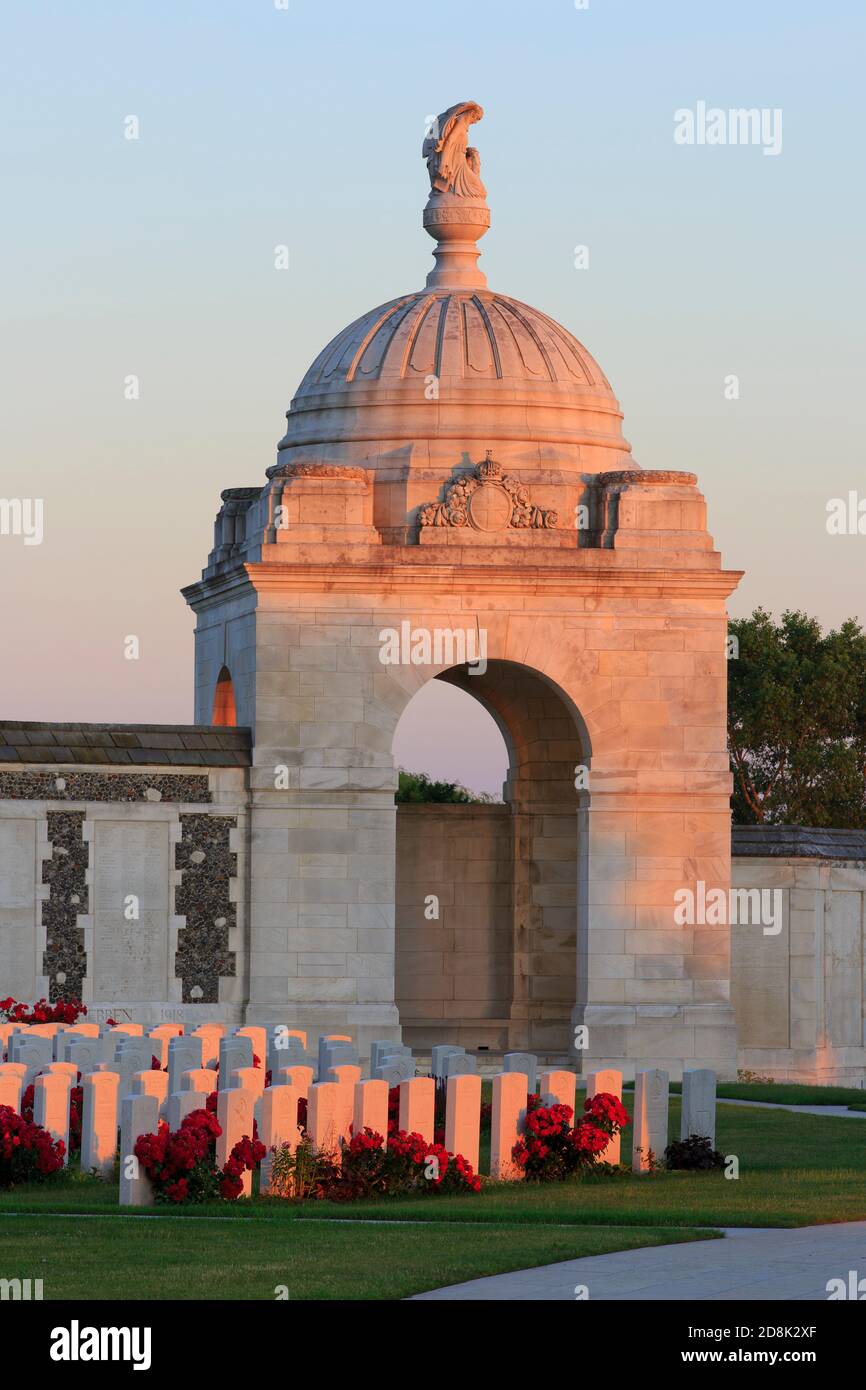Tyne Cot Cemetery (1914-1918), the largest cemetery for Commonwealth forces in the world, for any war, in Zonnebeke, Belgium at sunset

Image details
Contributor:
DE ROCKER / Alamy Stock PhotoImage ID:
2D8K2XFFile size:
63.3 MB (1.9 MB Compressed download)Releases:
Model - no | Property - noDo I need a release?Dimensions:
3840 x 5760 px | 32.5 x 48.8 cm | 12.8 x 19.2 inches | 300dpiDate taken:
25 June 2020Location:
Tyne Cot Cemetery, Vijfwegestraat, 8980 Zonnebeke, Flanders, Belgium, EuropeMore information:
Tyne Cot Commonwealth War Graves Cemetery and Memorial to the Missing is a Commonwealth War Graves Commission (CWGC) burial ground for the dead of the First World War in the Ypres Salient on the Western Front. It is the largest cemetery for Commonwealth forces in the world, for any war. The cemetery and its surrounding memorial are located outside Passchendale, near Zonnebeke in Belgium. On 4 October 1917, the area where Tyne Cot CWGC Cemetery is now located was captured by the 3rd Australian Division and the New Zealand Division and two days later a cemetery for British and Canadian war dead was begun. The cemetery was recaptured by German forces on 13 April 1918 and was finally liberated by Belgian forces on 28 September. After the Armistice in November 1918, the cemetery was greatly enlarged from its original 343 graves by concentrating graves from the battlefields, smaller cemeteries nearby and from Langemark. The cemetery grounds were assigned to the United Kingdom in perpetuity by King Albert I of Belgium in recognition of the sacrifices made by the British Empire in the defence and liberation of Belgium during the war. The cemetery was designed by Sir Herbert Baker. The Cross of Sacrifice that marks many CWGC cemeteries was built on top of a German pill box in the centre of the cemetery, purportedly at the suggestion of King George V, who visited the cemetery in 1922 as it neared completion.